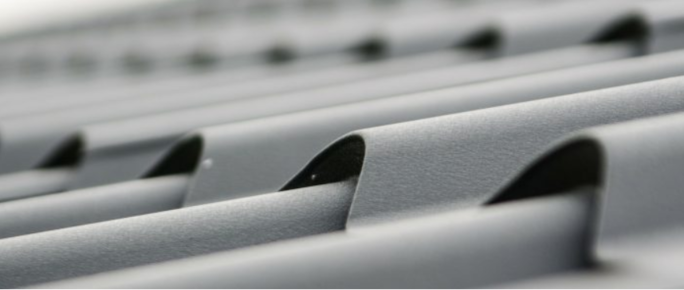An Inside Look at How CertainTeed Develops Their Cool Roof Shingles

By Todd Dinoia, CertainTeed LLC.
Everything you need to know about solar reflective (cool roof) shingles, including legal guidelines and how to get them into customer’s hands.
When homeowners are faced with deciding their home’s exterior design, they usually need to find a balance between personal aesthetic desires and staying within local code ordinances. Some codes or neighborhood regulations determine a homeowner’s choice of roofing materials, their landscaping, and in some instances, go so far as to regulate the type of paint homeowners can use.
At CertainTeed, my job as Vice President of Research and Development is to ensure that our customers get the best of both worlds. We design shingles that meet local codes (and are good for the environment), but also come in a variety of colors and styles. In fact, some of our more popular products are solar reflective shingles – commonly referred to as cool roof shingles – which keep homes cool throughout the year.
Today’s building codes require heat reflectivity
For the past decade, the California Energy Commission has issued guidelines for home builders to increase the energy efficiency of residential areas, known as the Cool Roof standards. These building codes were created to limit the effects of man-made climate change while also helping homeowners lower their energy bills. It’s not uncommon for parts of California to exceed a heat index of 100°F during the summer months – even in cooler regions like San Francisco.
If more homes had cool roof shingles, developers could limit just how much these high temperatures cost homeowners. Cool roofs have been found to reduce the amount of air conditioning needed in buildings by up to 15 percent, depending on factors like region, electricity rates, home size and building materials.
Since California issued these guidelines, other cities and states have implemented similar cool roof measures. A few of these regions include cities like Denver, Miami and Chicago.
Cool roof shingles prevent heat absorption
Cool roof shingles have allowed us to rethink how we combat the sun’s rays. When the sun hits your roof throughout the day, a portion of its energy is absorbed as heat into the roof and your home, and some is reflected away. Historically, homeowners have preferred darker colored roofs, which absorb far more solar heat than light colors. This heat radiates into the living spaces of the home, which creates two problems:
-
Individual homeowners have to run their HVAC systems more, driving up their electric costs because of the increased air conditioning used during the day.
-
The heat absorbed by the roof during the day can be released at night, warming up cities and creating a “heat island” effect. This is generally bad for the environment, but also means homeowners have to keep running their AC units when the sun goes down.
This is why we focused on the improvement of solar reflectivity from percentages in the single digits up to values between 20 and 25 percent. When more of the sun’s rays bounce off the home, we need less air conditioning throughout the day and night. This benefits the environment and homeowners’ wallets. After identifying the solution, we just needed the products to go with it.
The push to get cool roof shingles to market
Developing cool roof shingles takes time, but it takes even longer to prove that these shingles meet the expected standards of the Cool Roof Rating Council (CRRC), the oversight organization that develops credible methods for evaluating and labeling solar reflective roofing products. The CRRC has a three-year weathering process that determines the quality of the materials over time. Over the course of these three years, the CRRC can determine how effective the materials are and whether customers should feel confident buying them.
However, if manufacturers had to wait three years to get their cool roof shingles on the market, the delay would negatively impact technological innovation to the detriment of the customer. This is why the CRRC also allows Rapid Rating tests that, in three days, simulate the wear and tear on the shingles over the course of three years.
The Rapid Rating results let manufacturers claim aged values while waiting for the three-year aged results. The CRRC Rated Products Directory will list these initial laboratory-exposed results until the three-year weather-exposed results can be added.
The weather-exposed aged results are determined from radiative property measurements of the product sample used at weathering test farms in three separate climate zones over three years. While this test is completed, the product would carry a CRRC label reporting the Rapid Rating aged values, until the three-year weather-exposed results are available, at which time the aged values would be updated accordingly. This is a common practice for roofing manufacturers.
When brands pass the three-day Rapid Rating test, they can move forward with releasing their shingles to the market. That being said, we seek out a three-day test and then submit our products for a three-year test as well. This gives us the proper certification after a three-year period so customers know that our products meet the quality they need.
The Rapid Rating test exposes solar reflective shingles to UV rays, water and extreme temperatures. If you are curious about what this process looks like, check out this video interview we did with Ask This Old House. You can go inside the shingle testing process and see our cool roof shingle granules in action.
Even the best shingles aren’t 100% reflective
In today’s cool roofing market, the most advanced solar reflective shingles can reflect 40% of the sunlight that hits them. To do so, these shingles are blended to be lighter in color. It is hard to find dark roofing materials with high reflectivity.
Some customers have asked if we will ever have a 100% reflective shingle. Right now, this is not possible. Even if a shingle could be developed that was 100% reflective when it was installed on the roof, factors such as dirt, pollen and algae growth would reduce reflectivity as the roof ages.
Customers primarily buy with aesthetics in mind
Even as our team strives to bring new cool roof shingles to the market, we are limited by design trends and personal preferences of our consumers. For example, most commercial roofs have high levels of solar reflectivity because they are stark white. However, you likely won’t see many white roofs on homes while driving around your neighborhood because homeowners rarely choose light colors for their roofing.
Herein lies our challenge: how can we create highly-reflective cool roof shingles that still look good and come in a variety of dark colors?
Our team tries to balance visual appeal with solar reflectivity. When you shop for asphalt shingles on the market, you won’t be able to tell the difference between cool roof shingles and standard shingles other than the CRRC label with our accreditation. At this point in the development process, this is our goal. We want you to choose the shingle color or style you want, while we provide the reflectivity you need.
Our team is always moving forward
The research and development specialists that we keep on staff strive to find new reflective materials that are still visually appealing to customers. We are always looking for new colors and textures to debut that will make our customers happy.
In the coming years, we plan to increase our solar reflectivity values because the standards set by California (and states across the country) tend to rise over time. Not only do we want to be ready to meet those standards, we also want our cool roofing products to be visually appealing and affordable.
I couldn’t be more proud of my team. Our success comes from good research and development, which means the cutting-edge roofing that you will see on the market tomorrow is currently being developed by CertainTeed today.
To learn more about cool roofs, check out these resources:
Who, What, Where, and Why of Cool Roofs
How to Pick the Right Cool Roof Material
Learn more about CertainTeed in their RoofersCoffeeShop® Directory.

















-2025-xtv-mls-tour-2.png)




Comments
Leave a Reply
Have an account? Login to leave a comment!
Sign In